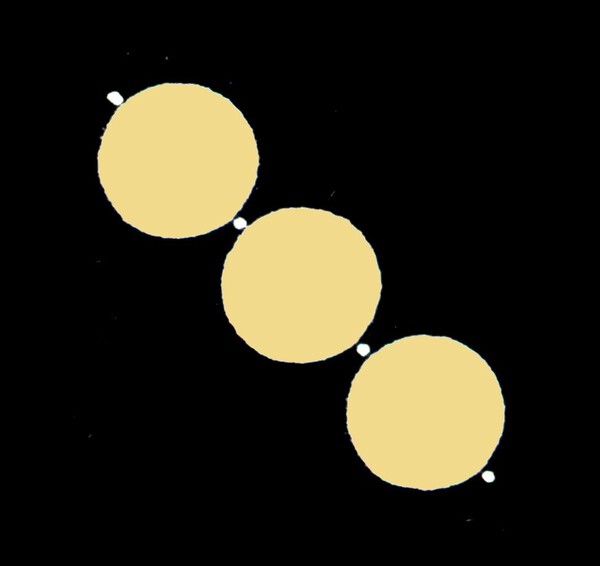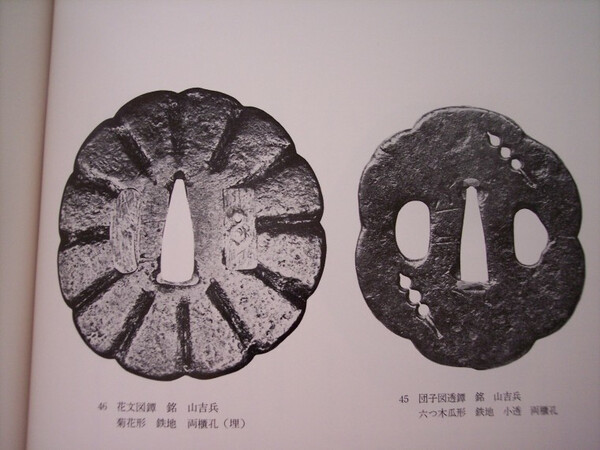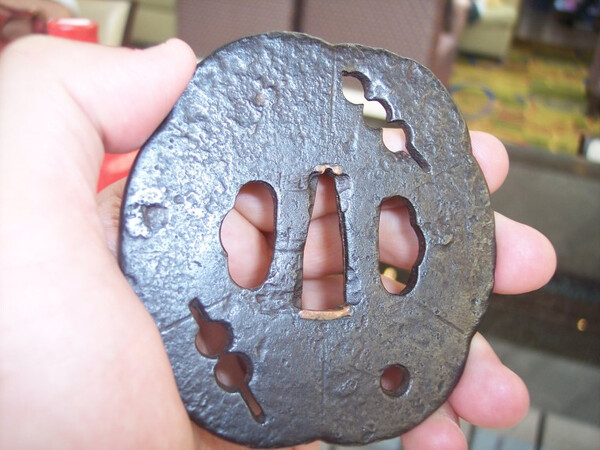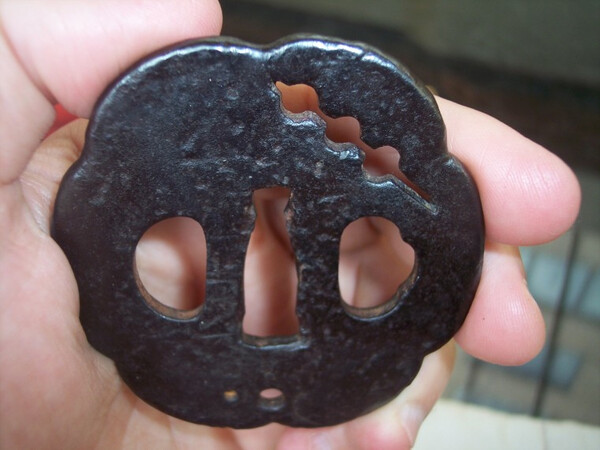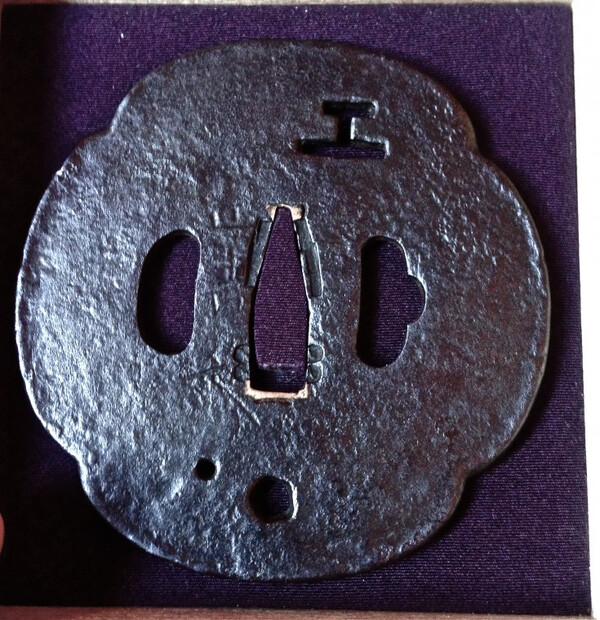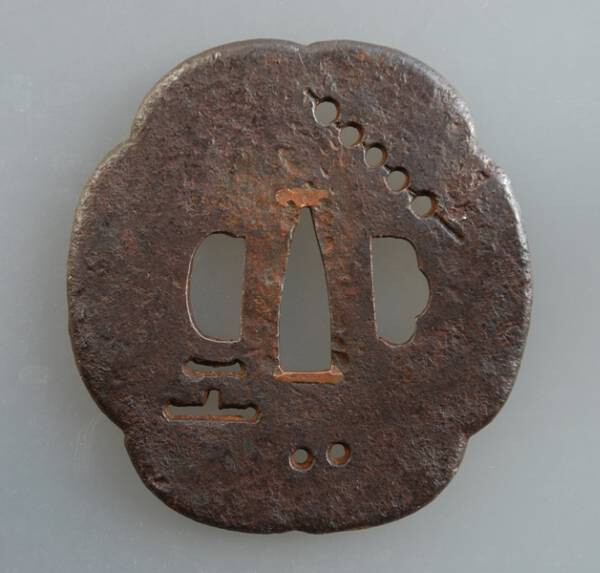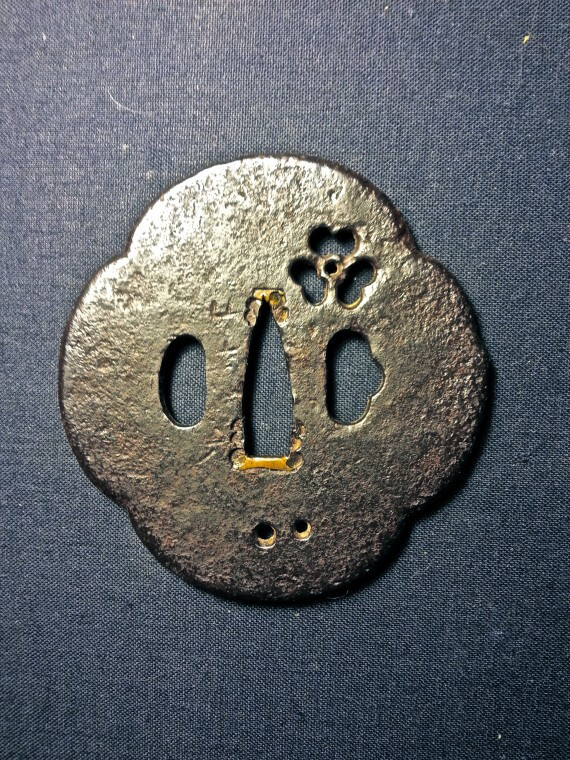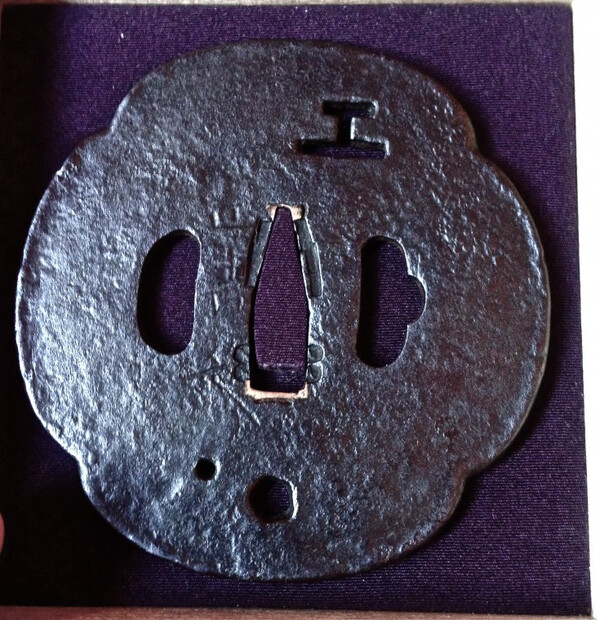-
Posts
952 -
Joined
-
Last visited
-
Days Won
4
Content Type
Profiles
Forums
Events
Store
Downloads
Gallery
Everything posted by Steve Waszak
-
Mike, To answer your questions: Yes, I have papered items. I have never sent an item for papers, but if I ever did, it would be to further/initiate learning, not as an effort to determine with finality the facts of the piece. So yes, the items I have that have papers came with papers when I bought them. I'd have bought them with or without papers, or with whatever result the papers indicated, as I knew the material well enough to have confidence in what I was buying, regardless of what the papers said. And yes, I would have paid the same price whether the items in questions had papers or not. I find what you've said about shinsa teams providing reasoning for their judgments interesting. I see far more value in submitting works (some works) to shinsa IF there is indeed reasoning/explanation provided along with the opinion. The learning comes from the reasoning/explanation far more than from the mere outcome. I have a particular tsuba right now that I've toyed with sending to shinsa. If I could be assured that a carefully-detailed explanation would be accompanying the opinion of the team, whatever that opinion was, I'd be more inclined to consider it more seriously. Brian, Yes, it's not especially fun to recognize the inherent fallibility of the human animal, and the instability, arbitrariness, and capriciousness that inform/accompany/are a result of that fallibility. In teaching the university courses I do in Argument, Critical Thinking, and Critical Theory, along with courses in U.S. Supreme Court history and jurisprudence, I am unfortunately(?) all too aware of how undeserving faith in a legal system can be, as well as in the processes of reasoning (or "reasoning") employed by would-be expert individuals and various bodies, legal or otherwise. However, as I have tried to stress, I do believe that certain determinations/conclusions can be drawn, but (this is the key point) the veracity and reliability of those determinations and conclusions are to be arrived at by assessing the reasoning used (this includes interrogating not only the logic employed, but the premises, assumptions, beliefs, etc... attendant to the critical thinking process), not by the reputation or standing of those doing it (or not doing it, as the case may be)... Cheers, Steve
-
As an amusing addendum, I quote Chris Bowen from a November 2nd, 2013 post: "There are many reasons why pre Hozon and Tokubetsu Hozon papers are dissed in general- the previously mentioned scandal involving papers issued at branch offices and the Yakuza, standards may not have been as rigid, shinsa team members may not have always been the most knowledgeable, and cozy relationships don't always yield the highest standards of integrity, etc. "I am not sure I completely buy the explanation that knowledge among Japanese experts has taken large strides over these last 20-30 years. I see no groundbreaking research works published that alter large portions of the landscape. There is no doubt that in certain narrow niches knowledge has been gained, but I don't see large, across the board gains that would materially affect the general level. Most new books parrot what is found in the older books. When is the last time the Nihonto Meikan was updated and reprinted?" While Chris is speaking specifically of earlier, pre-Hozon and Tokubetsu Hozon NBTHK papers here, the specific points made are hardly necessarily unique to pre-Hozon/TBH times. Can we be certain that these "cozy relationships" don't still exist and exert themselves? Can we be sure that today's shinsa teams are now, finally, "most knowledgeable"? I find it intriguing, too, Chris, that you specifically reference the "parrot[ing]" of older books here, when you have taken such pains to downplay the references to literature shinsa teams rely on.
-
Mike, Sorry, was out of town today, and didn't get a chance to respond to your posts. As might be expected, I have quite a bit to say in response. Let me begin by just quickly saying that I don't have much interest in soft-metal guards (especially of the shakuko-and-gold type), and so have not studied them much, and so would not be able to offer anything close to an informed (or as some would have it, "informed") opinion on the piece you have presented here. Your Yamakichibei would be an entirely different matter... Now, onto many other points/issues: 1. First, I think it is worth stressing that, unlike some here, I have no involvement with or vested interest in shinsa institutions (which might be obvious...). Were I to be a member of a shinsa team, or have any other formal (or even informal) association with the shinsa process, I would expect that my position would of course be pro-shinsa. I would also expect that this position would therefore be recognized for the biased one that it is. Additionally, since I have never submitted a piece for shinsa, I have no personal axe to grind with the shinsa process due to "a bad" experience. If I had personally submitted items before, and were continuing to do so as a regular practice, it would likewise be evident that I had some investment in the idea that shinsa is a valid concept, practice, and institution. But because I don't have any connection to shinsa whatsoever, my thoughts on it are not influenced by such connections; can this be said by others here who are arguing in support of shinsa and its eminence? 2. Here is a simple syllogism: Humans make errors. Shinsa teams are comprised of humans. Therefore, shinsa teams will make errors. Since neither of the initial premises is flawed, the conclusion must be accurate. This logical necessity is not a matter of opinion. It is an inescapable fact. This truth speaks to the reason I posted to this thread in the first place: shinsa teams can, must, and will make errors. You say, Mike, that "[t]here is not an incorrect or poor judgment, this is not a court." What? Of course there will be incorrect and poor judgments. This is unavoidable. Pieces are presented in order to receive informed/"informed" opinions on various aspects of the piece in question. The efforts of the shinsa team are focused as best as possible on determining factual information about that piece. Since the facts about that piece are not a matter of subjective valuation, errors can and will be made (see syllogism above). Now, this is not to say that the facts about that piece are easy to obtain or discover; in many cases, it may be impossible. But it's not as though a shinsa team's purposes are primarily concentrated on subjective evaluations (i.e. the work is beautiful; the work is important; etc...). The first task of the shinsa team is to attempt to determine factual information about a given work. This being the case, to say that "[t]here is not an incorrect or poor judgment" is demonstrably false on its face. 3. The implicit contention that the analogy I made with the U.S. Supreme Court is wrong-headed ("...this is not a court") is itself wrong-headed. The specific analogical relationship between the Court and a shinsa team has been misidentified. In both cases (as I took pains to detail), you have a body of individuals who are recognized experts (or "experts") in their field whose charged task it is to attempt to render judgments on the "cases" presented before them. Whether one set of judgments is legally binding or not is entirely beside the point. The actual point is that in each circumstance, this seasoned, trained, experienced, respected body of individuals can make mistakes, have made mistakes, and will make mistakes. Again, this is not a debatable point. It is both logically necessary (see syllogism above) and a matter of historical record. Which leads to my next point... 4a. ...a point of emphasis: I initially posted to this thread to emphasize that it is an untenable position to hold that a shinsa team's "determination" of a given piece's identity/authenticity is unquestioned gospel truth. I know Brian has said that he didn't think anyone really held such views, but according to the language I have seen repeated again and again and again in these forums, it is clear to me that there are many who do. As I have shown, shinsa results are (must be) imperfect. Since they are imperfect, how does one ever know when, where, and how often the error(s) will occur? In relation to this, when you say in response to my question concerning multiple submissions for the same piece (with different results) that "it depends on the submission," I would say, simply, no, it doesn't. It matters not at all what the specifics are: if a paper is issued, it is delivering a formal "informed" opinion. A paid-for formal opinion. If two different results are issued over whatever period of time, and whatever the make-up of the panel of judges, the relevant information (relevant to the reasons I posted to this thread in the first place) is that shinsa results are inconsistent, and therefore, cannot be 100% reliable. If they're not 100% reliable, and if one cannot know when/where the shinsa team will err, the final take-away is that shinsa results do not determine factual information about pieces dependably. This is not arguable. It is a logical necessity. Look, I would LOVE it if shinsa results could determine factual information with 100% accuracy. That would be wonderful! We could all really know what a given piece was, when it was made, perhaps by whom, and there would be zero doubt, and we could all rest comfortably, assured in the doubtless veracity of the information received. This, though, is pure fantasy. Wishing it were so does not make it so. Wanting desperately for it to be so does not make it so. Accept it. 4b. To your question/request for specific cases where a given piece had received papers to two different artists/schools, alas, I did not save/retain the information on these cases when I was made aware of them (I didn't know then that doing so would be useful for such threads). I know that the latest case I know of involved a tsuba, which received papers to Aizu Shoami after one submission, to another school entirely after another submission, but I don't recall which came first. I do know that the tsuba was submitted twice within a short period of time (a year or so). In any event, it cannot be denied that such has occurred and does occur. So my question rests: which result do you accept? The first? The second? Neither? What is guiding your decision of which result to accept or how to receive such conflicting outcomes? 5. As for shinsa teams being ready/willing to explain their decisions when asked, they should do this automatically, at least in some cursory way. Given the prices paid by submitters, it is bordering on unconscionable that reasons for results are not provided as a matter of course. 6. I see you agreed emphatically with Chris' contention that, "[o]f course a 'glowing resume' is not all that is necessary but without the experience and knowledge it indicates, critical thinking and 'reason' only gets you so far, and that is not far enough. In truth, you need both." Sorry to see you agree with this, as once again, such thinking is logically flawed. Whatever degree to which a "glowing resume" might "indicate experience and knowledge," it is not debatable that such "experience and knowledge" can, must, and will result in error at times. But most will not be able to discern which times. The conclusions to be drawn are inescapable. Why is this simple truth so difficult for some to accept? On a related note, since some here are apparently unwilling/unable to respond to my points concerning iemoto-ism, what are your thoughts, Mike, on the fictions that are proved to have resulted from iemoto practices in the Japanese arts? This "experience and knowledge" that dazzles some here is not infrequently intimately tied to iemoto dynamics. When it comes to ascertaining the factual nature of information, there can scarcely be a less reliable source by which to do so than iemoto-ism (or similar constructs). Whenever there is a system where the viewpoint, opinion, or beliefs of a master (or "master") must be taken as absolute, unquestioned fact, with a dearth of reasoning, explanation, evidence, etc..., that system is on its face to be rejected as a reliable source of fact. It does not mean that all information coming out of such systems must be fiction, but it does mean that one cannot know. I think it is abundantly clear that I, for one, will not be persuaded by the arguments put forth here so far in favor of submitting tosogu to shinsa. At least as far as submitting pieces in order to receive "the truth" about that tosogu. Shinsa has its place as a starting point for deeper investigation, as stated. This should be taken advantage of, as it is indeed a good point for launching into that investigation (especially if the shinsa team's reasons were provided automatically, as they should, given the prices paid). Knowing the inherent and inarguable limits of shinsa and the results obtained thereby, though, should not be taken as a full-blown damning of the institution. But those limits had better be recognized and accepted, and not rejected out of either hiding one's head in the sand, infatuation with the emperor's new duds, or both. Steve
-
Mike, So what do you make, then, of pieces that are submitted to NBTHK shinsa more than once over the course of some months or years (as has happened, probably multiple times), with the outcome that different results (a different attribution) were obtained on each occasion? Which kanteisho would you accept, the first one, attributing the piece to X, the second one, attributing the piece to Y? Perhaps a third submission would hit the jackpot? Does one accept the result that one "likes," while ignoring the other? Or maybe, as you say in your post here, you'd look to see who was on those respective shinsa panels and go with the result that would have come from an (even more) educated team? What if the panel members were the same each time? How could the same "incomparably knowledgeable" shinsa team issue contradictory results for a given submitted piece? The fact of the matter is that the whole contention that a deeply knowledgeable, experienced, trained, seasoned team of experts in their field will be far more likely to arrive at sound judgments than mere novices will is so obvious that it needn't even be stated. But this does not mean that this seasoned team will not arrive at incorrect/poor judgments from time to time. For the American members here, I will use the U.S. Supreme Court as an analogy. The U.S. Supreme Court is comprised of what many would agree is a deeply knowledgeable, experienced, trained, seasoned team of experts in their field. Their cumulative years of law experience amounts to centuries, centuries of legal knowledge. Yet this "incomparable" Court has arrived at decisions like Dred Scott v. Sanford, Plessy v. Ferguson, Korematsu v. U.S., Gobitis v. Minersville School District, and Bowers v. Hardwick (among others), outcomes so poorly reasoned and concluded that they are held up today in law school classrooms as "paragons of failure" in Supreme Court history. Simply kowtowing to the Court because it's the Court is a fine example of the Emperor's New Clothes syndrome, alive and well. Again, it doesn't matter how glowing the resume of the expert (or "expert"); what matters is the reasoning. And the whole well-known Japanese practice of hiden does not in the slightest obviate the absolute need for reasoning, especially given the all-too-often fanciful "knowledge" passed along via iemoto-ism. For a fascinating read on iemoto constructs, consult Morgan Pitelka's Handmade Culture. Mike, you note that the shinsa team is "always ready to prove their reasoning." Really? Why is it, then, that so many seem to feel that shinsa results are not explained, not transparent? Finally, you conclude your post by observing that "Like everyone knows, when [a piece] passes with flying colors, there's no sound of a complaint." Likely true, but as I have stressed many times now, if a collector at that point just sits back satisfied that "the mystery is solved," rather than using that result to pursue/deepen his own investigation, that is one helluva poor approach to take to the entire process. Adios, Steve
-
Chris, I can only say that without critical thinking, all else means very little. In particular, the sort of "information...that only comes from teacher to student" is highly suspect in Japanese art culture. The willful "twisting of truth" and/or simple (but hardly benign) misinformation resulting from the "iemoto-ism" rampant in Japanese arts makes confident reliance on the passing of "information" from teacher to student as veracious impossible. These may be the "odds," but if facts prove shinsa opinions wrong, the odds don't amount to much. The example I have provided with the "Saotome" Yamakichibei is hardly the sole occurrence of such error, which appears to happen more frequently with tosogu than with blades. In any event, it really matters not how esteemed the backgrounds, learning, reputations, etc... of shinsa team members may be: if they make errors, they make errors. Since they're human, this will happen. And since it happens (as your own post states very clearly), to rely on shinsa opinion as infallible, as many seem to do, is simply wrong-headed. Far too often, I have seen connoisseurs and collectors say something to the effect of, "you should just go ahead and submit the piece to shinsa; then you'll know." Nope, in fact, you won't know. You'll know what the paper says, but to think this proves anything in and of itself is demonstrably false. There is no getting around this. This being said, I have to stress that it's not that I have zero respect for shinsa opinions; rather, I receive them, weigh their judgments against the evidence, perhaps conduct further research myself, etc..., all in the effort to try to understand how the shinsa team arrived at their conclusion (since they won't provide their reasoning process as they should). As I've said many times now, shinsa results are a starting point for researching pieces, not an end point. Rejecting shinsa results because they're shinsa results makes even less sense than accepting them uncritically. But again, their opinions must be critically weighed, rather than being blindly taken as gospel, I don't care how experienced the team may be. It is the ideas, the thinking, the reasoning that matters, not the illustriousness of those doing it.
-
Henry, Real quick here... You ask what more is required of the oshigata...as "it is what it is." Yes, but if what "it is" is insufficient to come to confident conclusions, due to specific lacks of information in that oshigata, one must set aside the oshigata as an instrument of "proof" or even of support... You also note the access that shinsa teams have to source material... This is correct, of course. However, how often have we seen such source material be proven to be fictional (i.e. the "genealogy" of the Myochin...) or merely speculative? As concerns tosogu, when we remember that so many of the "schools" of tsuba were conjured out of thin air in the late 19th century by merchants seeking to make the piece they had for sale more appealing (and the sobering implications of this conjuring), then the "source material" you note these shinsa teams have access to becomes highly suspect to say the least... Finally, I have to ask how many of the shinsa team members have actual formal training in critical thinking and inquiry, as the evidence too often suggests they don't. If all that shinsa team members are doing is essentially reflexively consulting a suspect library in the native language to arrive at their decisions, such a process is itself one that is dubious on its face... Again, it would certainly help things if shinsa results were substantiated by the transparent and public presentation of the team's reasoning... Since they're not, a healthy (and legitimate) skepticism of their conclusions is fairly held, given the errors that those conclusions have demonstrably come to at times. Steve
-
Hi Henry, A few things... First, the "Saotome" tsuba in question was/is not mine. It was presented for sale, with the paper attributing it to Saotome. Had it been my tsuba, I certainly would not have submitted it, as there would have been zero need to: it is 100% a Yamakichibei. Granted, the guard is in poor condition, and someone has messed with the hitsu-ana in a bad way, but it is Yamakichibei (not one of the two men that most scholars recognize as the only two working in the Momoyama Period, but one of the two others that these scholars refuse to recognize because it would upset the catechism). As I have mentioned, it is signed (the significantly abraded condition of the mei does make it hard to see, I realize...), so trying to "understand" a Saotome call for this piece would be futile (outside of something akin to morbid curiosity). I also take some umbrage to your characterizing my resistance to accepting such papers as "Nah... don't think so, coz I don't think so." I have provided extremely specific, precise reasons why a call to Saotome makes no sense. It is ironic that you would characterize my response in this way, given that shinsa teams effectively expect us all to accept their conclusions for just those reasons: "We think so, coz we think so." How often do we see shinsa teams offer detailed, carefully delineated reasons for arriving at their conclusions for tosogu? Further, I think it is inaccurate and rather curious, frankly, that you say (concerning your Nobuie guard) that "the lack of interest that the members who opposed the NTHK (NPO) conclusion showed to this composition, to me, says a lot..." Pete and I both spent no small amount of time considering your tsuba with care. I made the point, more than once, that to attempt to judge the authenticity of the work, especially the iron and the workmanship, from photos alone was fraught with difficulty, and so backed away from attempting to do so. On this score, it is a bit disingenuous of you to note that you have consulted with others in Japan about the tsuba: they have seen the guard in hand; this makes a huge difference. All that Pete and I could go on with some degree of confidence, therefore, was the mei. I spent considerable time detailing the reservations I had about the authenticity of the mei, essentially echoing Pete's observations. I stand by my reservations of the way the mei is done, for the reasons I detailed earlier. I said in response to this oshigata you've provided that there was not enough to go on from this reproduced oshigata to draw any firm conclusions. The initial two strokes of the "Nobu" ji are missing, so one cannot judge from this. Further, those missing horizontal strokes on the left side of the "ie" ji are very worrisome. They should not be absent. In any event, one of the comments I'd made to you, Henry, about your identifying this as a futoji-mei signature was that, if anything, it would certainly be a hanare-mei, were it genuine. It has virtually none of the identifying features that would produce a futoji-mei call for this signature. And as for its being a legit hanare-mei, well, as I stated in the earlier thread on this piece, there are three or four aspects to the way the mei is rendered, especially the "ie" part, that are problematic. One of these by itself might be shrugged off; but when multiples emerge, this, as I say, is worrisome. I also stressed in my posts before that I sincerely hoped I was wrong, and I may indeed be. I would much prefer that your tsuba was authentic. But instead of automatically assuming that the shinsa team "must be correct" and that therefore there must be "gaps in the knowledge" of those that find the shinsa conclusions dubious, you should be considering the actual points being raised to support the resistance to the shinsa results, and analyzing these yourself. I notice that you didn't respond to a single one of these highly-detailed points that Pete and I raised. He and I didn't make these up out of thin air. Why didn't you engage in a discussion about these points, Henry? There is simply far too much deferring to shinsa teams as unimpeachable authorities occurring. There is no intrinsic Japanese trait that makes their analytical skills any more finely honed than ours. So let me turn the question back around onto you, Henry: what exactly in the shinsa team's judgment that the "Saotome" tsuba in question is, in fact, Saotome allows them to conclude this? Precisely what evidence supports this? Steve
-
Lee, Well there are a few things to consider here... First (as your qualifier suggests), arriving at confident judgments of iron character from photos is notoriously challenging; my providing of the photos of other pieces is therefore not so much about inviting careful comparisons of the various pieces' iron qualities as it is about offering tsuba to compare the mei and motif-work of. Further, the tsuba in question would seem pretty clearly to have significant condition issues (to put it mildly). The hitsu-ana would likewise appear to have been tampered with (also to put it mildly). As to the rendering of the sukashi elements, again, a hand-held examination would afford more confident conclusions. As to this being an utsushi of Yamakichibei work, it could be, but I strongly doubt it. However, having said that, I need to emphasize that I do not subscribe to the current view which holds that there were only two early (Momoyama) Yamakichibei tsubako. I believe there were at least four, probably five, of which the man who made this piece was one. Utsushi of Yamakichibei work is more or less limited to 19th-century copies after the time of "Sakura" Yamakichibei (latter 17th century), who did do some utsushi work, mostly in the vogue of the "nidai" Yamakichibei. When one views the 19th-century Yamakichibei utsushi, one does see very different treatment and appearance of the iron itself when compared to authentic Momoyama/early-Edo pieces. In any event, Lee, the main point of my original post was that the tsuba in question is not Saotome, yet it received an NBTHK paper to Saotome. Anyway, I fear that I am... Cheers, Steve
-
Yes, I can see where I come off as rather stubbornly insistent... But I suppose it would be helpful, as John said earlier in this thread, if the various shinsa teams were (more) transparent and generous with their assessment processes. Doing so would not only make their judgements more trustworthy/dependable, but would afford a terrific learning opportunity for us poor, lost students... One wonders why such "generosity" is not made available, especially given the prices paid for papers... I know I would love to see the explanation offered up for determining the tsuba in question to be Saotome... Tu amigo vano, Esteban
-
You need to look a little more carefully, amigo... There are certainly the clear remnants of the "bei" character from the Yamakichibei mei present in the "Saotome" guard, right between the "e" kana character and the left bottom corner of the nakago-ana. Further, the subject in the upper right of the tsuba references skewered dumplings, which as a motif has very tight associations with Oda Nobunaga, whose home province of Owari the Yamakichibei tsubako lived and worked in as well. The Yamakichibei tsubako are known to have reproduced this particular motif with some frequency (see photos below). Scholar John Dower, writing in The Elements of Japanese Design, notes that "..."...Oda Nobunaga [織田信長 or おだのぶなが - 1534-82], Japan's great sixteenth-century unifier...wished to see the severed heads of his enemies skewered like dumplings on a spit." (Dower, 110) Nobunaga's well known fondness for dumplings even resulted in a nickname for this particular food: uesama dango---"his highness's dumplings." (http://www.busho-aichi.jp/english/index.html) This design motif alluding to "Nobunaga's dumplings" is reproduced in the first image below. That there is a firm, concrete connection between Yamakichibei tsuba and the use of this motif is thus clear enough, but on top of this, I know of no other group or individual tsubako who uses this particular design, certainly not the Saotome. And on top of that, the use of (what looks to be) the "e" kana (katakana) is another practice virtually unique to Yamakichibei tsubako (see photo below). When one combines this knowlege of use of "trademark" motifs, with the yakite treatment evident on the tsuba in question, AND the remnant "bei" ji visible just at the lower left of the nakago-ana, it becomes abundantly clear that this is a Yamakichibei guard, and not Saotome. Yet it is papered Saotome. Still chalk and cheese...?
-
Seems it's time to "demonstrate a...gap in my knowledge by contradicting one of the main sword groups..." Not too long ago, the first tsuba pictured here received NBTHK papers to Saotome. For many, such papers with such an attribution would put an end to any speculation as to who/what group may have made the work in question, as the NBTHK had "decided" the issue. The fact is that this tsuba was certainly not made by any tsubako of the Saotome group. It is positively a Yamakichibei tsuba. Not only is it a Yamakichibei tsuba, but the specific Yamakichibei tsubako who made it is identifiable. The style, workmanship, motif, and remnant mei(!) all confirm this "attribution." I am providing photos of two other Yamakichibei guards, made by the same tsubako as the tsuba in question, for reference. As I have said many times in the past, I don't necessarily fault the NBTHK for making mistakes, even ones as serious as this. The far greater fault is to be found in those who uncritically and unreservedly accept any and every NBTHK/NTHK judgment as inarguable fact. Because the inescapable conclusion, drawn from the egregious NBTHK mistake in stating this tsuba to be Saotome, is that one can never know when the NBTHK (or other "main sword group") will be in error, which means that having full and unqualified confidence in papers is necessarily sheer folly. And all of the above is besides the murky issue of the politics of shinsa/papering, which only further cloud the reliability of papers... This is not to say that there is never any circumstance in which it is reasonable to seek papers for tosogu; however, I would argue that even in such a case, whatever judgment is rendered is only a starting point in ascertaining the actual origins/maker of the piece in question. Steve
-
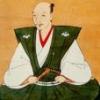
Kanzan Sato - Kodai Yamakichibei - Tsuba Attribution
Steve Waszak replied to Robert Mormile's topic in Translation Assistance
Hi Robert, Well, according to Okamoto, the "yon-dai" would specifically refer to an individual smith, the "fourth generation." Some may say that this fourth generation smith would be part of a "ko-dai group," in that any post-Momoyama-to-very-early-Edo Yamakichibei smith would be a "later generation" than those smiths working in the early 17th century. I think your locating of this "yon-dai" in the second half of the Edo period is likely to be accurate, specifically in the 19th century, when the revivalist spirit informed the zeitgeist of the times... Cheers, Steve -

Kanzan Sato - Kodai Yamakichibei - Tsuba Attribution
Steve Waszak replied to Robert Mormile's topic in Translation Assistance
Hi Robert, Okamoto, author of Owari To Mikawa No Tanko (Tsuba Smiths of Owari and Mikawa Provinces) would identify this tsuba specifically as made by the "yon-dai." This assumes that one accepts the traditional understanding of generations of Yamakichibei tsubako. While the "yon-dai" was likely a later smith (i.e. not Momoyama or very early Edo), it is, as far as I know, simply convention that he is seen as the fourth-generation Yamakichibei. I for one am quite doubtful about this understanding of this "school." Cheers, Steve -
Many thanks, Ford, for these very interesting photos and descriptions of the process. Looking forward to seeing more... Cheers, Steve
-
Exactly right. :D I'm always amazed at how relatively rarely such broader and deeper cultural connections are investigated with regard to nihonto and tosogu study. Cheers, Steve
-
Pete's post above, in particular his contention that "to understand Momoyama high-end samurai culture you need to understand wabi cha" is right on the money. I couldn't agree more. I might extend this to the "Oribe Tea" immediately following Rikyu in the 1590s as well. The Tea sensibility suffusing buke culture in the Momoyama Period is intimately connected to the aesthetics of high-level tsuba from that time and extending well into the 17th century, particularly in Owari and Higo. I firmly believe that attempting to study and appreciate iron tsuba from this period without also studying Tea and its aesthetics is nearly pointless. Cheers, Steve
-
lol... We'd have been scuffling for it, Pete! I actually can't believe it sold so cheaply. The tsuba is much better than that price, IMHO... Cheers, Steve
-
Hi David, That tsuba from page 181 in Sasano's first book, a piece he labels "shodai," is absolutely no-doubt "nidai." Even beyond the fact that it has since gone juyo as "nidai Yamakichibei," it is so obviously and iconically nidai in sensibility, design, style, and execution that it is frankly astonishing that Sasano could have thought it was "shodai" work. A very odd attribution. Pictured below is the tsuba in question. Cheers, Steve
-
Hi David, While this may be the best Yamakichibei to come out of Skip's collection (so far), and while it does appear to be a fine guard and a period piece (Momoyama to early-Edo), it is not a shodai work, in my opinion. I can see at least three things about it immediately which allow for this conclusion, but hand-held inspection would likely yield more. Again, I'm not disparaging the tsuba: I think it's a good piece (again, just going by the photos), but a workshop piece created in the early 17th-century Yamakichibei atelier. It's also possible that it is a much later work (i.e. 19th-century revival), but my initial thoughts are as I describe them here. Cheers, Steve
-

Help on an umimatsu netsuke
Steve Waszak replied to Bernard's topic in General Nihonto Related Discussion
Umimatsu = "sea pine" = fossilized coral. Cheers, Steve -
Right. Thanks, Grey. Fair enough. Cheers, Steve
-
Maybe if we all make enough of a racket, we can push Grey into some Black Friday deals... Cheers, Steve
-
I would agree with what Mark says here... And I agree, too, that this second bowl is not a modern work. A nice piece for sure. Cheers, Steve
-

Help on an umimatsu netsuke
Steve Waszak replied to Bernard's topic in General Nihonto Related Discussion
PM sent.




